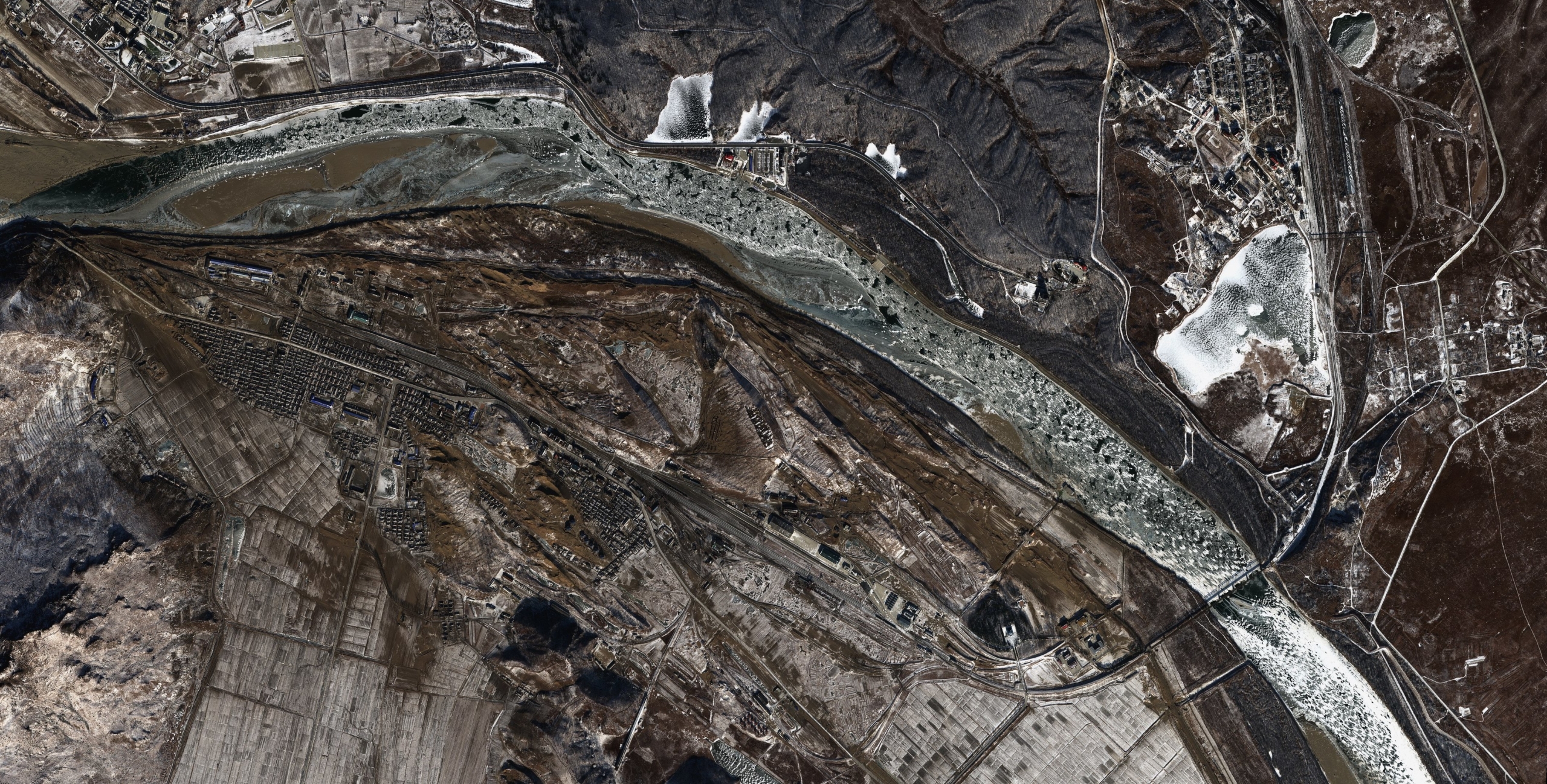
Arms for Energy: War Brings Together Russia and North Korea
An approximate count of the railcars at Khasan and Tumangang shows the movement of railcars of various types as observed in recent commercially available imagery.
Key Findings
- Analysis of recent commercially available satellite imagery of the Russia–North Korea railroad crossing suggests significantly increased energy and economic trade between the two countries as Pyongyang seeks to tighten ties with Moscow.
- The proliferation of railcars far outnumbers the number required to support the immediate nearby towns indicating a resurgence of railroad traffic between the two countries.
- The railcars observed at the crossing vary in type and suggest that the transfers of coal, oil, and other goods are returning to pre-COVID levels.
- In November 2022, the Tumangang–Khasan railroad crossing was the site of an arms transfer from North Korea to Russia, reportedly for use by the Wagner Group.
- Commercial imagery since November does not show the same type of cars at either of the rail facilities, but this does not rule out other possible arms transfers as suggested by recent White House press statements. Not all imagery of such a sensitive nature will be made available to the public.
- The increased sanctions chokehold on Russia due to the war in Ukraine increases the likelihood that the railroad traffic observed at this border crossing is also being used to both offset economic sanctions and ease surge demands for munitions, as evidenced by the Wagner Group’s acquisition of North Korean arms.
Overview
In September, newly declassified U.S. intelligence revealed that Russia was buying millions of artillery shells and rockets from North Korea. As international sanctions restrict Russia’s weapons supply chains, the country has turned to sources such as Iran and North Korea.1
A few months after this revelation and in response to North Korea’s repeated denial, the White House released satellite imagery of an “initial delivery…[of] infantry rockets and missiles into Russia for use by Wagner.”2 The delivery, which occurred in November of last year, is believed to have supplied the Wagner Group as part of North Korea’s support for Russian operations against Ukraine.3
The White House-released images show the transfer of five “Russian railcars” at the Tumangang–Khasan railroad crossing (42.415397 130.641489). The five cars traveled from Russia to North Korea on November 18, 2022, and on the next day, North Korea loaded the railcars with shipping containers and returned them to Russia.4
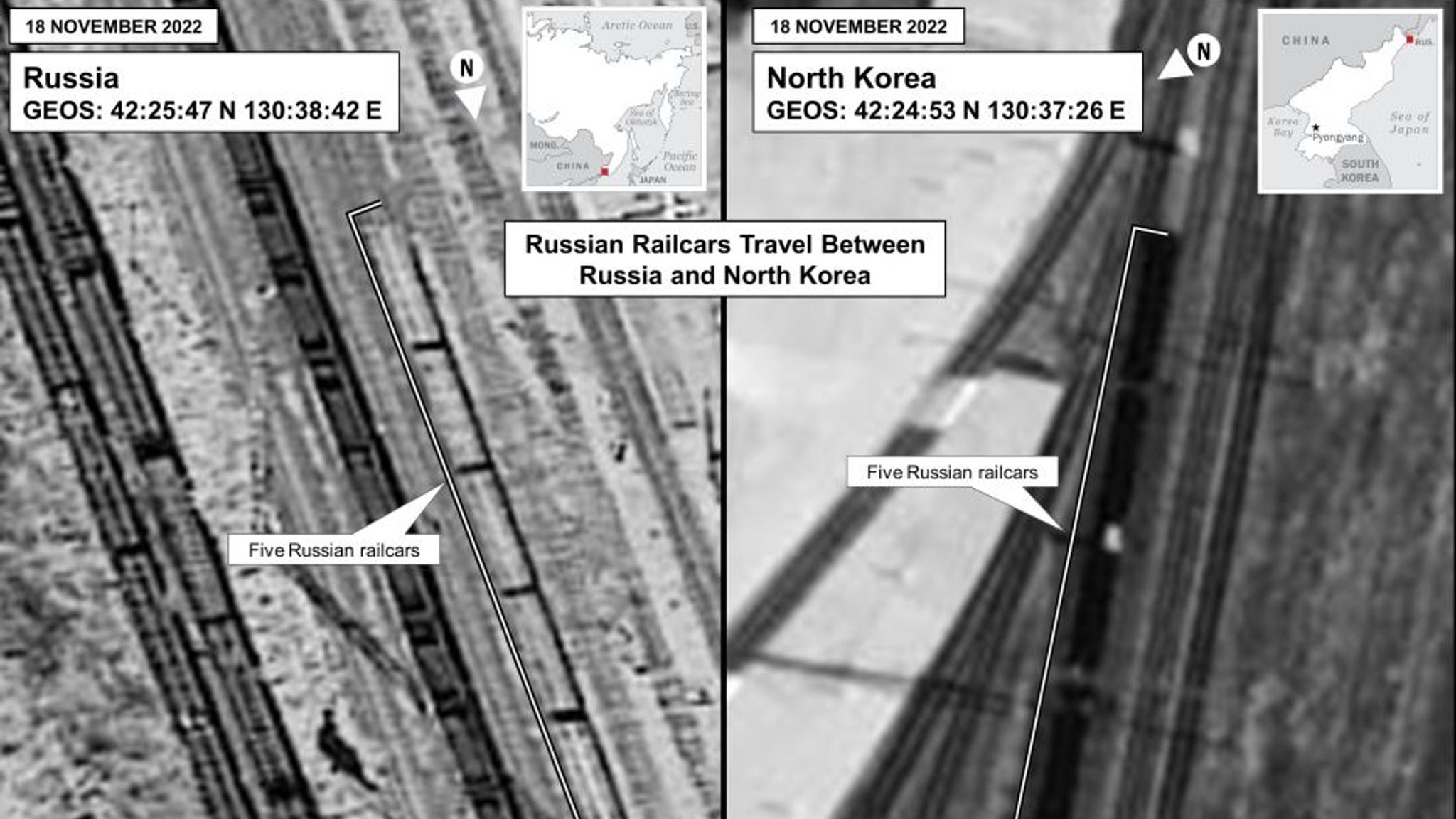
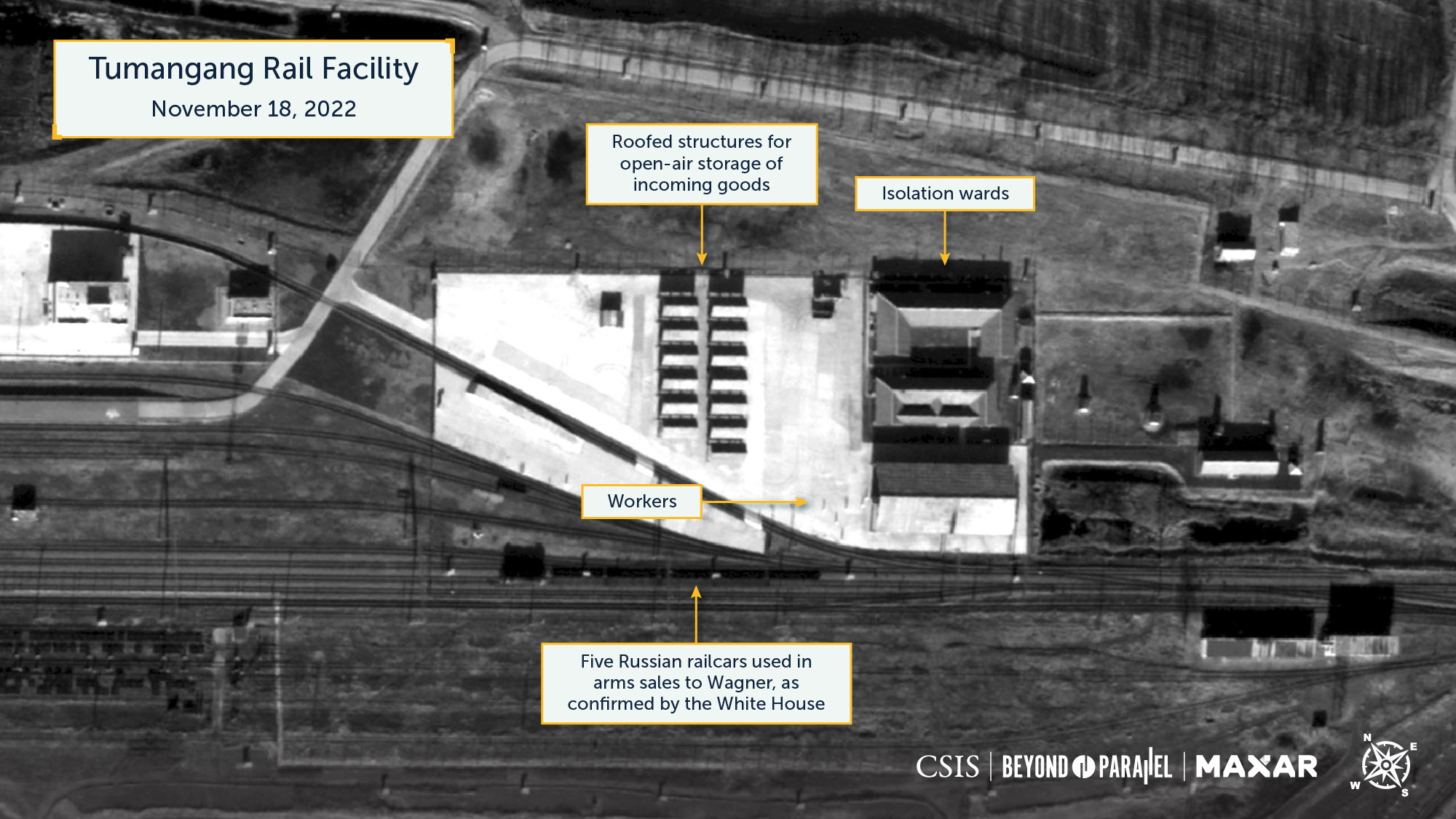
The United States government did not specify how these railcars were confirmed to have been involved in arms sales to Wagner, which undoubtedly involved sensitive sources and methods of intelligence. However, the use of the Tumangang-Khasan railroad crossing for this arms sale indicates that this border crossing has witnessed a resurgence of strategic trade, sales, and transfer between the two countries.
While reports often describe movement between North Korea and China or Russia, these reports cannot be consistently verified solely by publicly available satellite imagery. However, satellite imagery does provide a general idea understanding of the volume and nature of railroad traffic between countries when viewed over an extended period.
Analysis of publicly available commercial satellite imagery from November 18, 2022—the date of the White House-released images—to January 2023 shows that the number of railcars present at this border crossing far outnumbers the amount needed to support the small Russian border town of Khasan and its immediate areas. Although none of the railcars in publicly available images match the precise sizes and shapes of the railcars reportedly used in the arms sales to Wagner and the specific nature of the imaged cross-border trade is unclear, much of the railroad traffic is likely related to supporting Russia in the face of the sanctions it faces due to the conflict in Ukraine.
Background
The Tumangang-Khasan railroad crossing (42.415397 130.641489) is in the northeast corner of North Korea along the Tumen River (두만강), approximately 33 kilometers from the Rason Specialize Economic Zone and on the border with Russia. The crossing consists of the Korean-Russian Friendship Bridge, Tumangang railyard, and Khasan railyard, and is North Korea’s sole railroad crossing with Russia.
The Tumangang railyard (42.417307 130.618461) is physically North Korea’s largest rail facility connecting to another country and includes a sizable petroleum products storage facility. In a 2018 report, previous to COVID-19, the Tumangang facilities were assessed to be active year-round, with approximately 45 – 80 locomotives and railcars of various types present at any given time. Of these, approximately 40 – 50 percent of the railcars were tank cars, likely used to support the movement of petroleum products as part of Russian energy assistance to the country.5 Although imagery over the past three years shows a decrease in the presence of railcars at the border as North Korea halted trade with the outside world, the railyard has seen a significant increase of activity over the past few months, including the construction of disinfection and quarantine structures.6
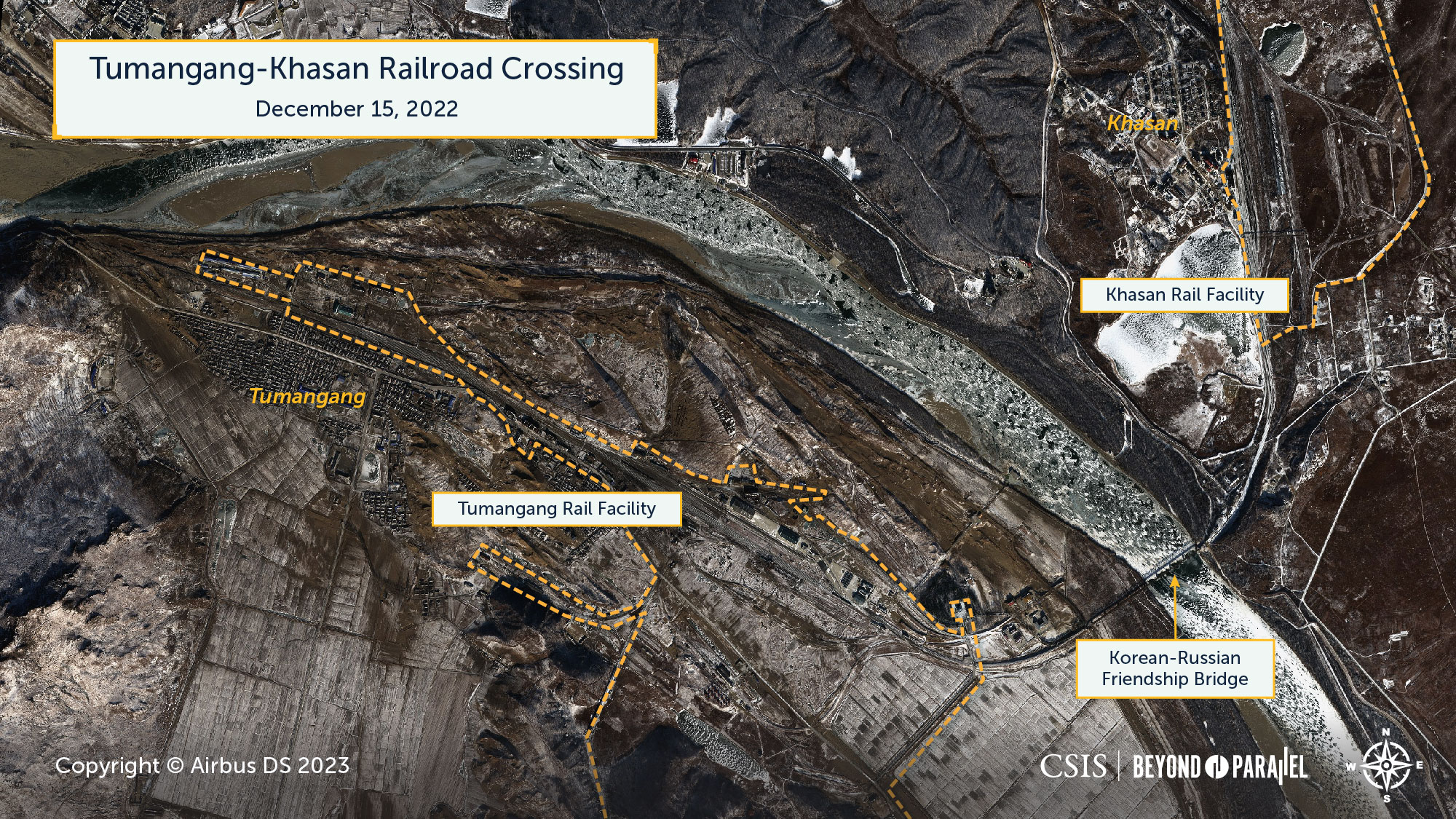
Analysis of Recent Railcar Traffic
A review of more than 35 publicly available commercial satellite images of the border crossing and the two railyards acquired between November 2022 and January 2023 shows a significant level of railcar presence. Specifically, the number of railcars seen at the Khasan railyard far outnumber those required to support the small town of Khasan and its immediate areas, making it highly probable that the railcars are related to a resurgence of cross-border trade. Among the reviewed, images of sufficient quality were used to approximate the count of railcars using measurements of railcar lengths.
It Is important to note that none of the railcars seen in publicly available imagery resembled the exterior and measurement of the railcars involved in the reported arms sales to Wagner seen in the White House-released images. Additionally, the type of railcars—boxcars, ore cars, and likely petroleum tank cars—indicate that traffic between the two countries varies in the type of goods transported.
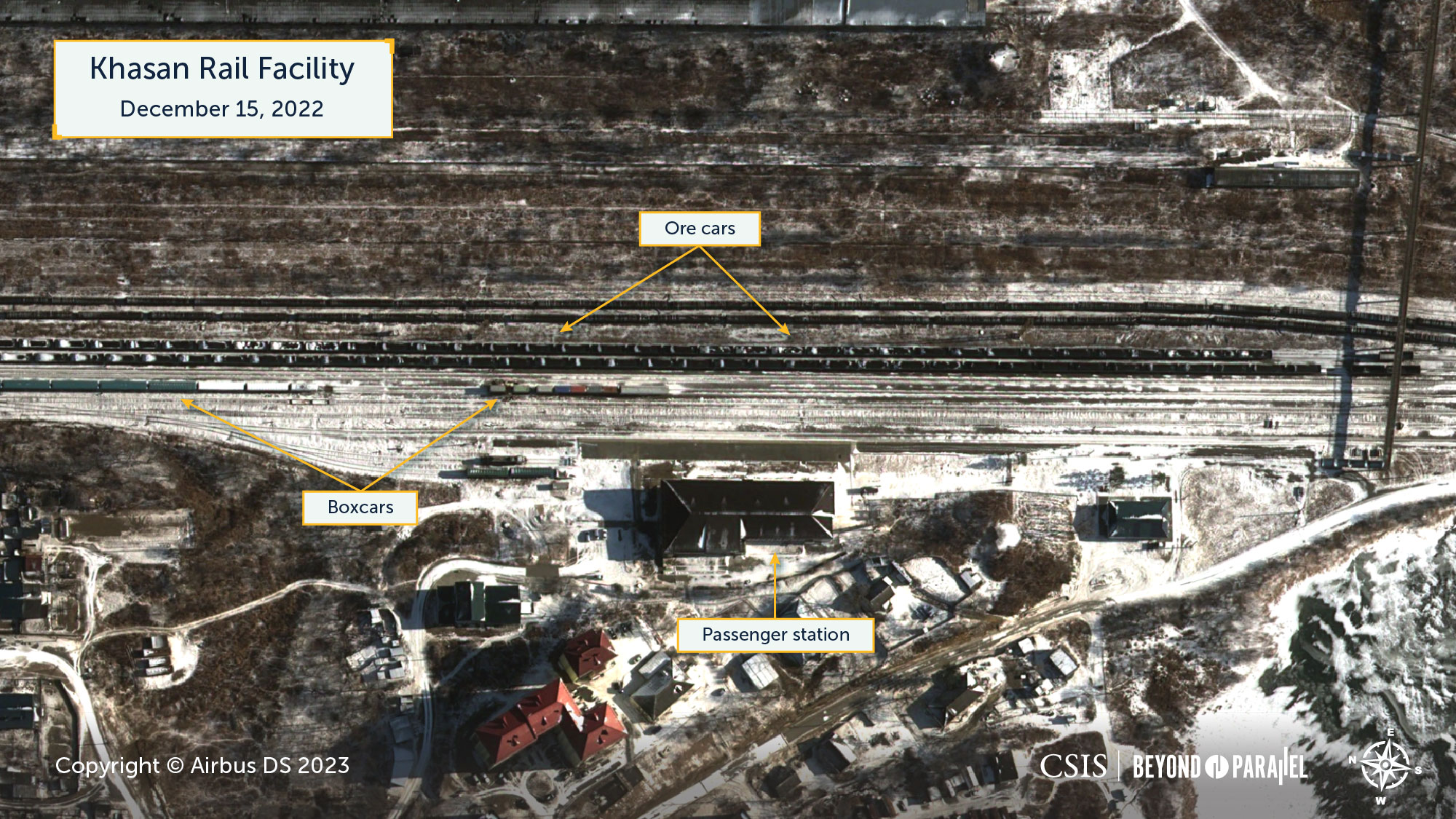

Tracking cross-border railcar movement on a daily basis is extremely challenging, if not impossible, using currently available commercial satellite imagery. However, an example of such traffic from Russia to North Korea was captured in December 2022. A Maxar image acquired on December 7, 2022, show several railcars, among which are three green boxcars with a smaller white railcar. A Planet image captured the following day, on December 8, 2022, of the Tumangang rail facility shows that these four railcars had been moved here and remain in the same order.
An approximate count of the railcars at Khasan and Tumangang shows the movement of railcars of various types as observed in recent commercially available imagery. Box cars (dashed lines) were seen at both Khasan and Tumangang. However, ore cars were only observed at Khasan, and oil/petroleum tank cars were only seen at Tumangang. An inconsistent pattern of railcar movement is typical at this border crossing, partially due to changes to export and usage cycles, as well as the limitation of commercial satellite imagery availability.

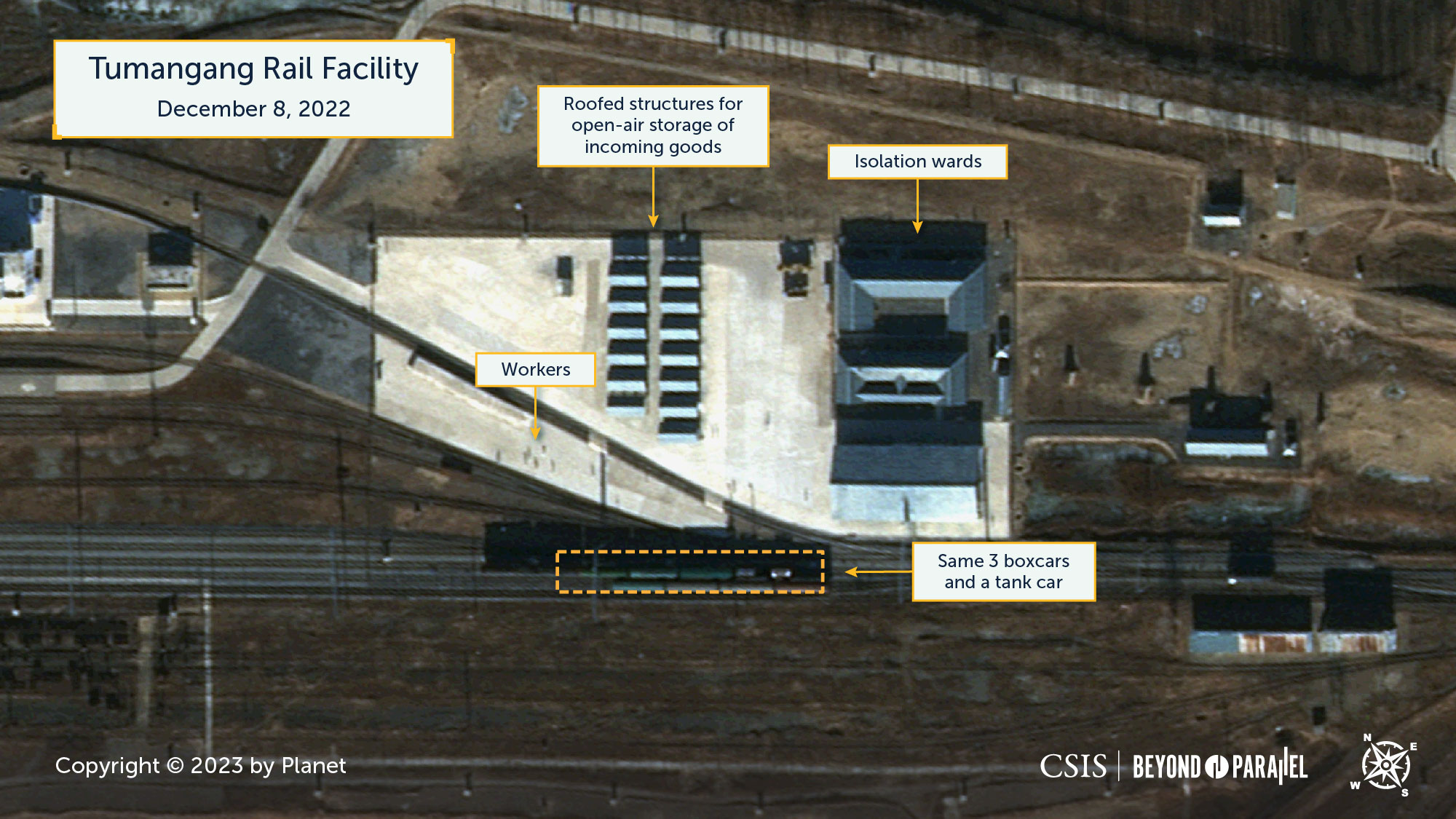
In the past, the trade between the two countries mainly served to support North Korea through the import of goods and energy assistance. However, today, the increased sanctions chokehold on Russia due to the war in Ukraine increases the likelihood that the traffic at the Tumangang–Khasan railroad crossing is also be used to both offset economic sanctions and ease surge demands for munitions, as evidenced by Wagner’s acquisition of North Korean arms.
While satellite imagery alone cannot conclusively identify the contents of the railcars traveling between the two countries, future observation of railcar traffic at the Tumangang-Khasan railroad crossing can provide a broad but useful indicator of the changing volume of trade activity between the two nations.
References
- Julian E. Barnes, “Russia Is Buying North Korean Artillery, According to U.S. Intelligence,” The New York Times, September 5, 2023, https://www.nytimes.com/2022/09/05/us/politics/russia-north-korea-artillery.html. ↩
- “Press Briefing by Press Secretary Karine Jean-Pierre and NSC Coordinator for Strategic Communications John Kirby,” The White House, January 20, 2023, https://www.whitehouse.gov/briefing-room/press-briefings/2023/01/20/press-briefing-by-press-secretary-karine-jean-pierre-and-nsc-coordinator-for-strategic-communications-john-kirby-8/; DPRK Today, “Press Statement by Director General of U.S. Affairs of DPRK Foreign Ministry,” KCNA Watch, January 30, 2023, https://kcnawatch.org/newstream/1675076920-465635286/press-statement-by-director-general-of-department-of-u-s-affairs-of-dprk-foreign-ministry%e2%80%8b/. ↩
- “Press Briefing by Press Secretary Karine Jean-Pierre and NSC Coordinator for Strategic Communications John Kirby,” The White House, January 20, 2023, https://www.whitehouse.gov/briefing-room/press-briefings/2023/01/20/press-briefing-by-press-secretary-karine-jean-pierre-and-nsc-coordinator-for-strategic-communications-john-kirby-8/. ↩
- Ibid. ↩
- Victor Cha, Joseph S. Bermudez Jr., and Marie DuMond, “Making Solid Tracks: North Korea’s Railway Connections with China and Russia,” Beyond Parallel, January 7, 2019, https://beyondparallel.csis.org/making-solid-tracks-north-koreas-railway-connections-china-russia/. ↩
- Colin Zwirko, “EXCLUSIVE: Photos reveal North Korean COVID ‘isolation ward’ on Russian border,” NK News, December 29, 2022, https://www.nknews.org/pro/exclusive-photos-reveal-north-korean-covid-isolation-ward-on-russia-border/. ↩
